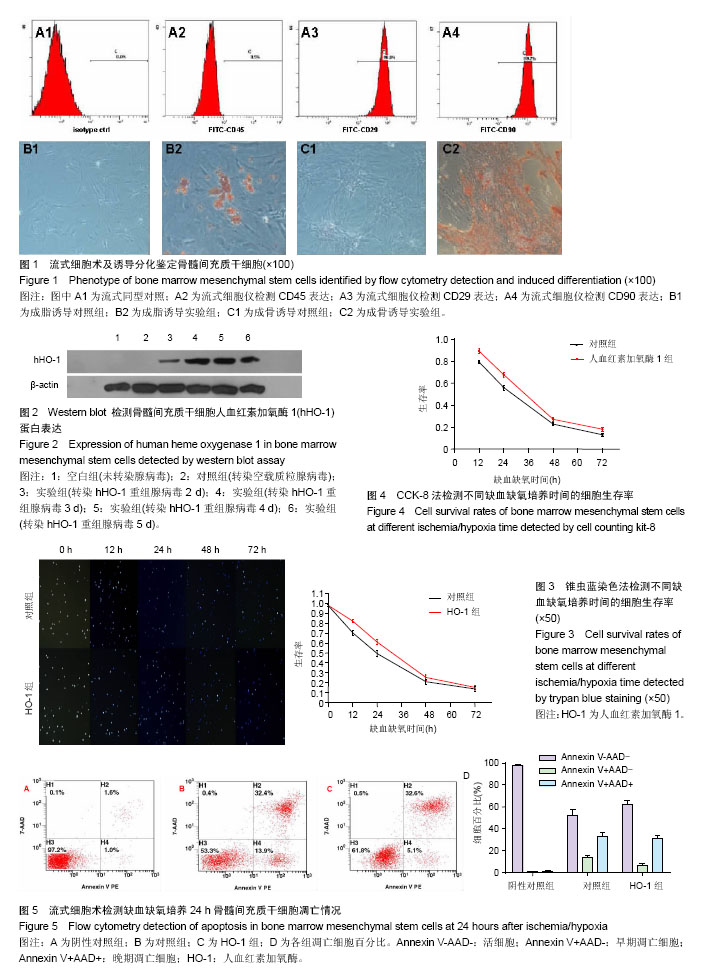| [1] Mozaffarian D, Benjamin EJ, Go AS, et al. Heart disease and stroke statistics--2015 update: a report from the American Heart Association. Circulation. 2015;131(4):e29-322.[2] Young PP, Schäfer R. Cell-based therapies for cardiac disease: a cellular therapist's perspective. Transfusion. 2015; 55(2):441-451.[3] Gerbin KA, Murry CE. The winding road to regenerating the human heart. Cardiovasc Pathol. 2015;24(3):133-140.[4] Tian T, Chen B, Xiao Y, et al. Intramyocardial autologous bone marrow cell transplantation for ischemic heart disease: a systematic review and meta-analysis of randomized controlled trials. Atherosclerosis. 2014;233(2):485-492.[5] Telukuntla KS, Suncion VY, Schulman IH, et al. The advancing field of cell-based therapy: insights and lessons from clinical trials. J Am Heart Assoc. 2013;2(5):e000338.[6] Trounson A, McDonald C. Stem Cell Therapies in Clinical Trials: Progress and Challenges. Cell Stem Cell. 2015;17(1): 11-22.[7] Gao F, Chiu SM, Motan DA, et al. Mesenchymal stem cells and immunomodulation: current status and future prospects. Cell Death Dis. 2016;7:e2062.[8] Miura Y. Basics and clinical application of human mesenchymal stromal/stem cells. Rinsho Ketsueki. 2015;56(10):2195-2204. [9] Kawashiri MA, Nakanishi C, Tsubokawa T, et al. Impact of Enhanced Production of Endogenous Heme Oxygenase-1 by Pitavastatin on Survival and Functional Activities of Bone Marrow-derived Mesenchymal Stem Cells. J Cardiovasc Pharmacol. 2015;65(6):601-606.[10] Hao BB, Pan XX, Fan Y, et al. Oleanolic acid attenuates liver ischemia reperfusion injury by HO-1/Sesn2 signaling pathway. Hepatobiliary Pancreat Dis Int. 2016;15(5):519-524.[11] Kawashiri MA, Nakanishi C, Tsubokawa T, et al. Impact of Enhanced Production of Endogenous Heme Oxygenase-1 by Pitavastatin on Survival and Functional Activities of Bone Marrow-derived Mesenchymal Stem Cells. J Cardiovasc Pharmacol. 2015;65(6):601-606.[12] Zhang L, Chan C. Isolation and enrichment of rat mesenchymal stem cells (MSCs) and separation of single-colony derived MSCs. J Vis Exp. 2010;(37): 1852.[13] Briguori C, Reimers B, Sarais C, et al. Direct intramyocardial percutaneous delivery of autologous bone marrow in patients with refractory myocardial angina. Am Heart J. 2006;151(3): 674-680.[14] Wu TW, Wu J, Li RK, et al. Albumin-bound bilirubins protect human ventricular myocytes against oxyradical damage. Biochem Cell Biol. 1991;69(10-11):683-688.[15] Memon IA, Sawa Y, Miyagawa S, et al. Combined autologous cellular cardiomyoplasty with skeletal myoblasts and bone marrow cells in canine hearts for ischemic cardiomyopathy. J Thorac Cardiovasc Surg. 2005;130(3):646-653.[16] Lu H, Li Y, Zhang T, et al. Salidroside Reduces High-Glucose- Induced Podocyte Apoptosis and Oxidative Stress via Upregulating Heme Oxygenase-1 (HO-1) Expression. Med Sci Monit. 2017;23:4067-4076.[17] 邓宁波,曾元清,韩腾龙,等.hHO-1联合GATA-4修饰大鼠骨髓间充质干细胞抗凋亡及向心肌分化的实验研究[J]. 解放军医学杂志, 2017,42(4):314-319.[18] Fan X, Mu L.The role of heme oxygenase-1 (HO-1) in the regulation of inflammatory reaction, neuronal cell proliferation and apoptosis in rats after intracerebral hemorrhage (ICH). Neuropsychiatr Dis Treat. 2016;13:77-85. [19] Li C, Zhang C, Wang T, et al. Heme oxygenase 1 induction protects myocardiac cells against hypoxia/reoxygenation- induced apoptosis : The role of JNK/c-Jun/Caspase-3 inhibition and Akt signaling enhancement. Herz. 2016; 41(8): 715-724. [20] Ma T, Chen T, Li P, et al. Heme oxygenase-1 (HO-1) protects human lens epithelial cells (SRA01/04) against hydrogen peroxide (H2O2)-induced oxidative stress and apoptosis. Exp Eye Res. 2016;146:318-329.[21] Hamedi-Asl P, Halabian R, Bahmani P, et al. Adenovirus-mediated expression of the HO-1 protein within MSCs decreased cytotoxicity and inhibited apoptosis induced by oxidative stresses. Cell Stress Chaperones. 2012;17(2): 181-190.[22] Zeng B, Ren X, Lin G, et al. Paracrine action of HO-1-modified mesenchymal stem cells mediates cardiac protection and functional improvement. Cell Biol Int. 2008;32(10):1256-1264.[23] Mancuso C, Bonsignore A, Di Stasio E, et al. Bilirubin and S-nitrosothiols interaction: evidence for a possible role of bilirubin as a scavenger of nitric oxide. Biochem Pharmacol. 2003;66(12):2355-2363.[24] Dominici M, Le Blanc K, Mueller I, et al. Minimal criteria for defining multipotent mesenchymal stromal cells. The International Society for Cellular Therapy position statement. Cytotherapy. 2006;8(4):315-317.[25] Hamedi-Asl P, Halabian R, Bahmani P, et al. Adenovirus- mediated expression of the HO-1 protein within MSCs decreased cytotoxicity and inhibited apoptosis induced by oxidative stresses. Cell Stress Chaperones. 2012;17(2): 181-190.[26] 刘楠梅,王会玲,韩国锋,等. HO-1基因修饰对急性肾损伤微环境下骨髓间充质干细胞增生分化的影响[J].中华肾病研究电子杂志, 2015,4(4):200-207.[27] Serafini R, Longobardi V, Spadetta M, et al. Trypan blue/giemsa staining to assess sperm membrane integrity in salernitano stallions and its relationship to pregnancy rates. Reprod Domest Anim. 2014;49(1):41-47.[28] Shi XL, Gu JY, Han B, et al. Magnetically labeled mesenchymal stem cells after autologous transplantation into acutely injured liver. World J Gastroenterol. 2010;16(29): 3674-3679.[29] Ercan E, Bagla AG, Aksoy A, et al. In vitro protection of adipose tissue-derived mesenchymal stem cells by erythropoietin. Acta Histochem. 2014;116(1):117-125.[30] 白海,王存邦,张玲,等.血红素加氧酶1在骨髓间充质干细胞中抗凋亡作用研究[J].中华医学杂志, 2012,92(32):2292-2294.[31] 王艾丽,曾彬,程新耀,等.血红素氧合酶-1基因修饰的骨髓间充质干细胞培养上清液对心肌梗死治疗作用的实验研究[J]. 中华临床医师杂志:电子版,2013,7(18):8270-8274.[32] Liang OD, Mitsialis SA, Chang MS, et al. Mesenchymal stromal cells expressing heme oxygenase-1 reverse pulmonary hypertension. Stem Cells. 2011;29(1):99-107.[33] Cremers NA, Lundvig DM, van Dalen SC, et al. Curcumin-induced heme oxygenase-1 expression prevents H2O2-induced cell death in wild type and heme oxygenase-2 knockout adipose-derived mesenchymal stem cells. Int J Mol Sci. 2014;15(10):17974-17999.[34] Peng Y, Pan W, Ou Y, et al. Extracardiac-Lodged Mesenchymal Stromal Cells Propel an Inflammatory Response Against Myocardial Infarction via Paracrine Effects. Cell Transplant. 2016;25(5):929-935.[35] Hao J, Zhang Y, Jing D, et al. Mechanobiology of mesenchymal stem cells: Perspective into mechanical induction of MSC fate. Acta Biomater. 2015;20:1-9.[36] Wang L, Xu X, Kang L, et al. Bone Marrow Mesenchymal Stem Cells Attenuate Mitochondria Damage Induced by Hypoxia in Mouse Trophoblasts. PLoS One. 2016;11(4): e0153729. |
.jpg)

.jpg)